Pioneer spirit: Paul Kasmin celebrates the legacy of Frank Stella

The seminal painter and sculptor Frank Stella is commanding considerable attention amidst the frenzied opening of the art season. Preceding his retrospective at the Whitney Museum of American Art, Chelsea dealer Paul Kasmin is staging ‘Frank Stella: Shape as Form’.
Stella was a multitalented practitioner, exemplified in this exhibition, which showcases a total of ten works, each marking pioneering periods of an oeuvre spanning 50 years. Beginning in the 1960s, Stella began exploring a minimalist vocabulary and a dialogue between sculpture and painting.
For example, Sinjerli III – drawn from his 1967 Protractor series – highlights his use of fan-like composition, painted with crisp concentric bands of colour, going far beyond a mere two-dimensional canvas to one appearing both recessive and protruding at the same time.
Just four years later, Stella’s Felsztyn II, from his Polish Village series, marks a sudden departure from a totally two-dimensional picture plane to examples that extend out into space. Even his palette – in saffron yellow, dove blue and grey – is distinctive. ‘What was important in the case of Polish Villages was something else – constructions,' he explained at the time. ‘I built my own paintings.’
By 2005, the artist’s work shifted in yet another direction, as his lurid K 17 approaches both sculpture and relief while consisting of cast aluminium and stainless steel.
With Christie’s selling Stella’s shaped canvas Abajo for $6.7 million only a year ago and the Whitney retrospective just around the corner, the innovative artist’s legacy has been secured for good.

Stella was a multitalented practitioner, as exemplified in this exhibition of ten works. Pictured: Eskimo Curlew (3X), 1977
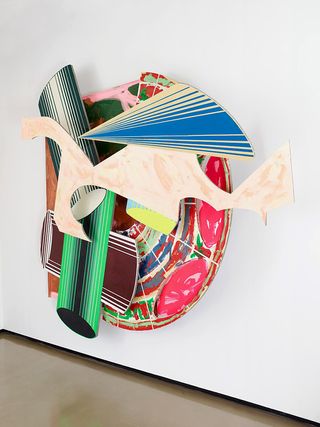
Beginning in the 1960s, Stella began exploring a minimalist vocabulary and a dialogue between sculpture and painting. Pictured: La Scienza della Fiacca, 3.5 X, 1984

Felsztyn II, from the Polish Village series, marks Stella's sudden departure from a totally two-dimensional picture plane to examples that extend out into space. Pictured: Felsztyn II, 1971
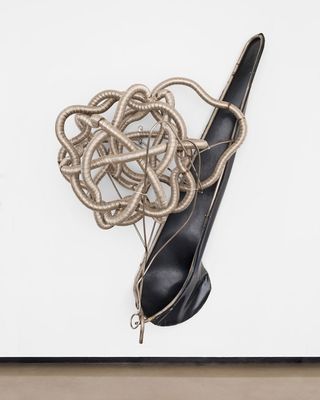
With Christie’s selling Stella’s shaped canvas Abajo for $6.7 million only a year ago and the Whitney retrospective just around the corner, the innovative artist’s legacy has been secured for good. Pictured: kapar, 2003
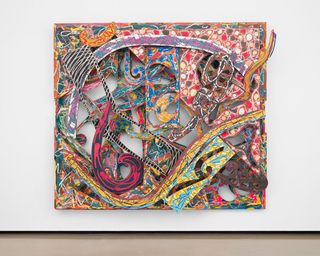

Sunapee III, 1966
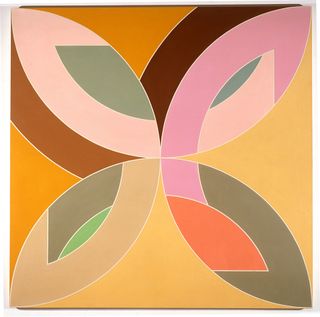
Flin Flon, 1970
INFORMATION
Photography courtesy Frank Stella / Artists Rights Society (ARS), New York, 2015. ‘Frank Stella: Shape as Form’ will be on show until 10 October
ADDRESS
Paul Kasmin Gallery
293 Tenth Avenue
New York, NY 10001
Wallpaper* Newsletter
Receive our daily digest of inspiration, escapism and design stories from around the world direct to your inbox
-
 Pininfarina Battista Reversario is a new one-off electric hypercar
Pininfarina Battista Reversario is a new one-off electric hypercarThe all-electric Pininfarina Battista Reversario is joining its aesthetic inverse in an ultra-select car collector’s garage. We take a look at a car built to a very precise order
By Jonathan Bell Published
-
 Fernando Jorge’s fluid diamond earrings show his curve appeal
Fernando Jorge’s fluid diamond earrings show his curve appealDiscover Brazilian jewellery designer Fernando Jorge's snake-like silhouettes and graphic shapes
By Hannah Silver Published
-
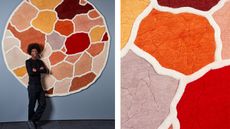 Abreham Brioschi debuts Ethiopia-inspired rugs for Nodus
Abreham Brioschi debuts Ethiopia-inspired rugs for NodusAbreham Brioschi teams up with luxury rug experts Nodus to translate visions from his heritage into a tactile reality
By Ifeoluwa Adedeji Published
-
 Tension, freedom, restraint: Elliott Puckette crosses the line at Kasmin New York
Tension, freedom, restraint: Elliott Puckette crosses the line at Kasmin New YorkArtist Elliott Puckette talks doubt, contradictions, and venturing into sculpture at Kasmin New York
By Tilly Macalister-Smith Last updated
-
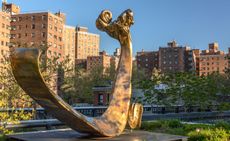 Alma Allen’s biomorphic sculptures have minds of their own
Alma Allen’s biomorphic sculptures have minds of their ownIn a bold takeover of Kasmin’s gallery and sculpture garden in New York, American artist Alma Allen introduces his latest series of curious creatures in bronze
By Harriet Lloyd-Smith Last updated
-
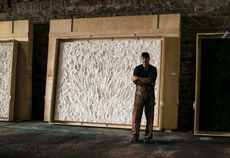 Bosco Sodi on minimalism, imperfection, and the emotive power of art
Bosco Sodi on minimalism, imperfection, and the emotive power of artAs painter and sculptor Bosco Sodi opens major solo shows in Malagá, Manhattan and Brooklyn, we visit his studio to discover a creative process that embraces the accidents of nature. A version of this story will appear in the December 2020 issue of Wallpaper, on newsstands 12 November
By TF Chan Published
-
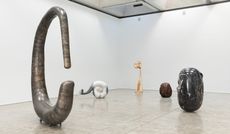 Alma Allen reaches great new heights in New York exhibition
Alma Allen reaches great new heights in New York exhibitionThe American artist brings together monumental sculptures in bronze, wood and stone at Kasmin Gallery
By Pei-Ru Keh Last updated
-
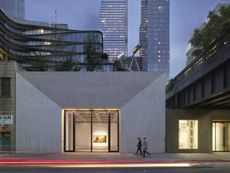 Paul Kasmin reveals fourth gallery space designed by studioMDA
Paul Kasmin reveals fourth gallery space designed by studioMDABy Pei-Ru Keh Last updated
-
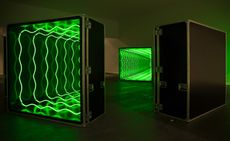 Infinity and beyond: Ivan Navarro’s installation throws light on Masterpiece London
Infinity and beyond: Ivan Navarro’s installation throws light on Masterpiece LondonBy Charlotte Jansen Last updated
-
 Roxy Paine explores nature, folklore and geometry in his latest exhibition
Roxy Paine explores nature, folklore and geometry in his latest exhibitionBy Olivia Martin Last updated
-
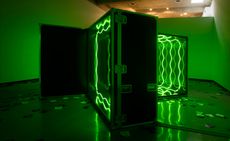 Rhythm of life: Iván Navarro marches to the beat of his own drum
Rhythm of life: Iván Navarro marches to the beat of his own drumBy Ann Binlot Last updated